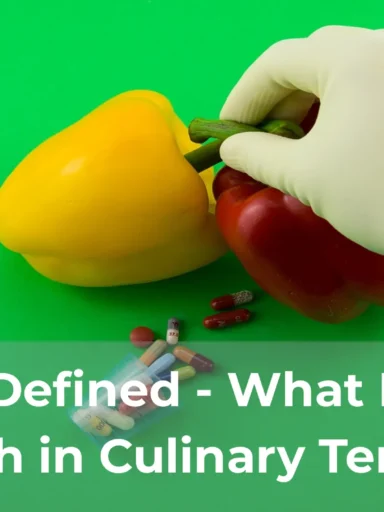The Science of Cooking – Understanding Maillard Reaction
The Science of Cooking – Understanding Maillard Reaction
Have you ever wondered why your steak turns brown and develops a delicious crust when it’s seared? Or why your bread becomes golden and crispy when it’s toasted? The secret lies in a fascinating chemical process called the Maillard reaction. This reaction is responsible for the complex flavors and aromas that we associate with cooked food, and understanding it can take your culinary skills to a whole new level.
The Maillard Reaction: Exploring the Chemistry Behind Culinary Magic
Have you ever wondered why a perfectly browned steak tastes so delicious? Or why freshly baked bread has that enticing golden crust? The answer lies in the Maillard reaction, a fascinating chemical process that occurs when food is cooked at high temperatures. Join us as we delve into the world of culinary chemistry and explore how this reaction transforms ordinary ingredients into mouthwatering delights.
The Maillard reaction, named after the French chemist Louis-Camille Maillard, is a complex series of chemical reactions that take place between amino acids and reducing sugars in food. When these compounds are subjected to heat, a cascade of chemical transformations occurs, resulting in a myriad of aromatic compounds and a distinctive browning effect. This reaction is responsible for the rich flavors and enticing aromas found in a wide range of foods, from grilled meats and toasted pastries to roasted coffee beans and caramelized vegetables. Understanding the chemistry behind the Maillard reaction not only allows us to appreciate the artistry of cooking but also opens doors to new culinary techniques and flavor combinations.
Diving Deep into the Science of Cooking: Unraveling the Maillard Reaction
Have you ever wondered why a perfectly browned steak tastes so delicious or why the crust of freshly baked bread is so aromatic? The answer lies in a fascinating chemical reaction called the Maillard reaction. This complex process occurs when amino acids and reducing sugars react together under high heat, resulting in a range of flavors, aromas, and colors that make our favorite dishes so irresistible. In this article, we will dive deep into the science of cooking and unravel the mysteries behind the Maillard reaction, exploring its origins, mechanisms, and how it transforms ordinary ingredients into culinary masterpieces.
From Baking to Grilling: How the Maillard Reaction Transforms Flavors
From Baking to Grilling: How the Maillard Reaction Transforms Flavors
Discover the science behind the mouthwatering aromas and delectable flavors that make your favorite baked goods and grilled dishes so irresistible. The Maillard reaction, named after the French chemist Louis-Camille Maillard, is a chemical process that occurs when heat is applied to certain foods, resulting in a complex series of reactions that enhance taste, aroma, and appearance. Whether you’re savoring a freshly baked loaf of bread or biting into a perfectly seared steak, understanding how the Maillard reaction works can greatly enhance your culinary skills and appreciation for the art of cooking.




